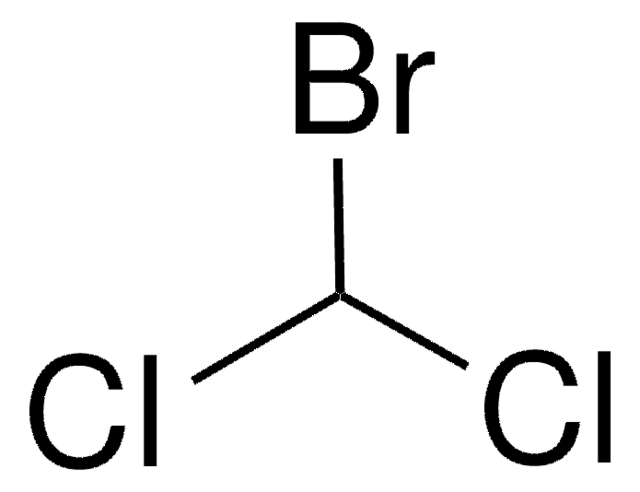139181
Bromodichloromethane
≥97%
Synonym(s):
Dichlorobromomethane
About This Item
Recommended Products
Assay
≥97%
form
liquid
contains
potassium carbonate as stabilizer
refractive index
n20/D 1.497 (lit.)
bp
87 °C (lit.)
mp
−55 °C (lit.)
solubility
water: insoluble
density
1.98 g/mL at 25 °C (lit.)
functional group
bromo
SMILES string
ClC(Cl)Br
InChI
1S/CHBrCl2/c2-1(3)4/h1H
InChI key
FMWLUWPQPKEARP-UHFFFAOYSA-N
Looking for similar products? Visit Product Comparison Guide
Application
Biochem/physiol Actions
Signal Word
Danger
Hazard Statements
Precautionary Statements
Hazard Classifications
Acute Tox. 4 Oral - Carc. 2 - Eye Dam. 1 - Skin Irrit. 2 - STOT SE 3
Target Organs
Respiratory system
Storage Class Code
10 - Combustible liquids
WGK
WGK 3
Flash Point(F)
Not applicable
Flash Point(C)
Not applicable
Personal Protective Equipment
Regulatory Listings
Regulatory Listings are mainly provided for chemical products. Only limited information can be provided here for non-chemical products. No entry means none of the components are listed. It is the user’s obligation to ensure the safe and legal use of the product.
PRTR
Class I Designated Chemical Substances
ISHL Indicated Name
Substances Subject to be Indicated Names
ISHL Notified Names
Substances Subject to be Notified Names
JAN Code
139181-10G:4548173928753
139181-BULK:
139181-50G:4548173928760
139181-VAR:
139181-100G:4548173928746
Choose from one of the most recent versions:
Already Own This Product?
Find documentation for the products that you have recently purchased in the Document Library.
Our team of scientists has experience in all areas of research including Life Science, Material Science, Chemical Synthesis, Chromatography, Analytical and many others.
Contact Technical Service









